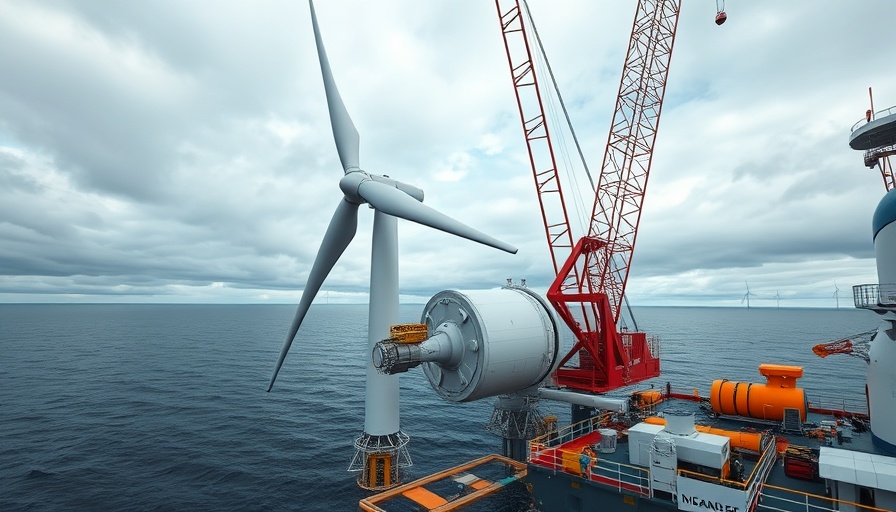
Decommissioning: The New Frontier for Offshore Wind Energy
The offshore wind energy sector is thriving, with its global capacity projected to leap from 81 gigawatts (GW) in 2024 to approximately 250 GW by 2030. Countries, particularly China and Europe, are racing to set up expansive wind farms that not only harness renewable energy but also pose the lurking challenge of decommissioning older turbines. With the operational life of these structures typically lasting 25 years, the industry now faces the pressing question: what happens when wind turbines near the end of their life cycle?
Understanding the Recycling Challenge
According to Ørsted, a leading Danish wind turbine manufacturer, about 85-95% of a turbine can be recycled. However, the turbine blades, often made from composite materials, remain a significant hurdle. Unlike steel or aluminum, the recycling of composite materials is complex and not widely practiced, making them a burden on landfill sites and an ecological concern as they take hundreds of years to decompose.
Current State of Decommissioning
In Europe, known for its mature offshore wind sector with 37 GW installed, decommissioning has begun with some test cases. The world's first offshore wind farm, established in the Danish Baltic Sea in 1991, is an early example—though only 6 MW of capacity are expected to be decommissioned by the end of this year. WindEurope anticipates that 29 MW will be removed through 2030, emphasizing the need for a comprehensive decommissioning strategy in the face of escalating capacity installations.
Repower or Remove: The Dilemma
Industry stakeholders are torn between decommissioning and repowering options. Refitting older turbines may save costs and time, but the foundation size for older structures limits the possibilities for modern turbines, which often require larger bases. WindEurope's forecasts suggest that only 33 MW of turbines are expected to undergo repowering by 2030, indicating a need for innovative solutions to future-proof existing wind farms.
Environmental Impact of Decommissioning
The ecological ramifications of leaving turbine infrastructure behind carry significant weight. The Crown Estate's recent assessment highlighted the importance of balancing green electricity generation with environmental stewardship. The outcomes showcased that new developments could maximize generation, while measures aimed at prolonging existing wind farm life could safeguard marine habitats more effectively.
The Quest for Sustainability
The dilemma of decommissioning not only impacts power generation but extends into broader themes of sustainability and responsible consumption. By consciously limiting waste and reusing materials, the sector aligns itself with the principles of a circular economy and sustainable development goals. Future innovation in blade recycling and material sourcing are ethically essential for reducing the carbon footprint of wind energy.
Paths Forward: Strategies for Change
As policymakers and industry players chart a path forward, collaborative efforts focusing on eco-friendly practices, sustainable development, and investment in green technologies will be crucial. Through community awareness and conscientious efforts towards reducing waste and biodiversity preservation, stakeholders can ensure that future expansion in offshore wind does not come at the cost of the environment.
The urgency of addressing these decommissioning challenges is clear as the demand for renewable energy soars. It is essential to engage in sustainability practices now to pave the way for a cleaner, greener future. Keeping the conversation around eco-friendly solutions vibrant will foster community involvement and inspire innovative approaches to what lies ahead in the realm of offshore wind energy.
 Add Row
Add Row  Add
Add 



Write A Comment